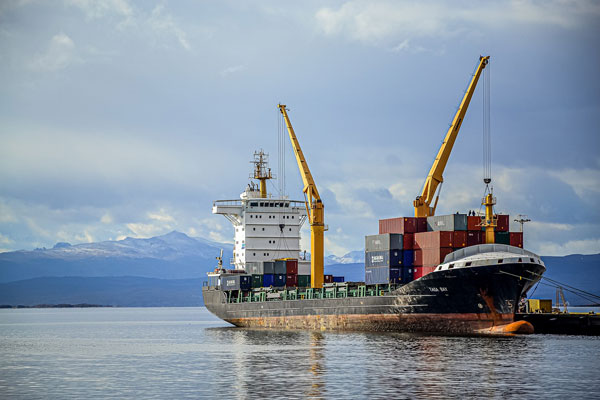As pressure mounts to cut maritime emissions, UK startup tests floating carbon capture system on cargo ships

[Ship, Cranes, Loading image, Photo Credit to Pixabay]
In mid-June 2025, in a bid to curb rising emissions from one of the world’s most overlooked polluters, a London-based startup launched a compact carbon capture system aboard a commercial cargo ship, marking the first test of its kind conducted at sea.
This summer, a steel container roughly the size of a garden shed was secured to the deck of a 3,200-container vessel navigating the Suez Canal.
Inside the unit were thousands of quicklime pellets capable of absorbing carbon dioxide directly from the ship’s exhaust, a critical step toward decarbonizing a sector responsible for nearly 3 percent of global greenhouse gas emissions.
The system was developed by Seabound, a small but rapidly-growing startup founded in east London by climate-minded entrepreneurs Alisha Fredriksson and Roujia Wen.
Drawing inspiration by large-scale industrial carbon capture systems, the duo engineered a lightweight, modular alternative that could be easily slotted onto existing ships, with no retrofitting required.
“We wanted something practical, something that could be deployed now,” said Fredriksson, who pivoted her career path after reading a UN climate report on the long-term risks of inaction.
“Shipping is essential, but it doesn’t have to remain this polluting.”
Initial trials suggest that the device can capture up to 78 percent of carbon emissions and 90 percent of sulfur pollutants, converting harmful gases into harmless limestone inside the unit.
Once docked back at port, the limestone-filled container is swapped for a fresh one, while the captured material can be stored, sold, or reused industrially.
The pilot comes amid a time of mounting regulatory pressure. Just months ago, the International Maritime Organization announced new rules requiring ships to cut emissions year over year, a move that has left many in the industry scrambling for immediate solutions.
However, scaling up remains a significant hurdle. Most commercial ships still rely on fossil fuels, and efforts to develop zero-emission alternatives like ammonia or wind-powered systems remain costly and limited in availability.
Critics caution that stopgap measures such as carbon capture must not delay a full transition to cleaner fuels.
“There’s a risk that these technologies become an excuse to maintain the status quo,” said Blánaid Sheeran, a policy officer at climate NGO Opportunity Green.
“We need urgency, but also ambition.”
Seabound asserts its system isn’t a replacement, it’s a bridge. With funding from investors and shipping partners, the team is now preparing to deliver full-scale commercial units later this year.
Each unit will cost tens of thousands of pounds, a fraction of the price tag for a new low-emissions vessel.
Although the startup is working to source cleaner “green quicklime,” which is not yet widely available, Fredriksson believes this kind of innovation is vital for a just energy transition.
“Our goal is to help ships decarbonize now,” she said, “so that when cleaner fuels are ready, the industry is too.”
As climate threats intensify, the pressure to clean up the global supply chain grows stronger. Seabound’s carbon capture container may not be a final answer, but it could be a critical first step.
Whether this small container can make a global impact remains to be seen, but it signals that the race to decarbonize shipping is no longer on the horizon, it has already begun.

- Sieun Park / Grade 11
- International School Manila

![THE HERALD STUDENT REPORTERS [US]](/assets/images/logo_student_us.png)
![THE HERALD STUDENT REPORTERS [Canada]](/assets/images/logo_student_ca.png)
